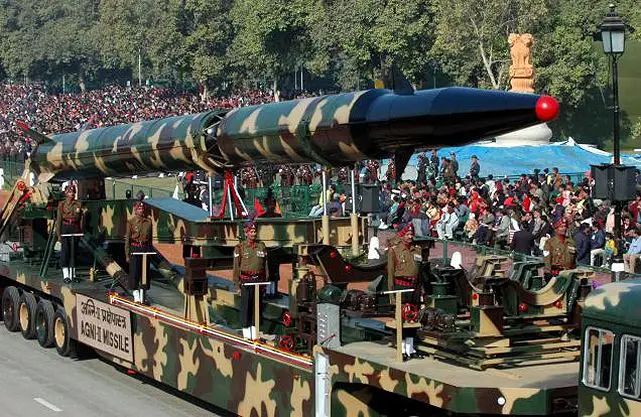| a | |||
Defence & Security News - India |
|||
| Sunday, November 9, 2014 08:16 AM | |||
| India successfully test-fired its local-made nuclear-capable Agni-II strategic ballistic missile. | |||
India
,on Sunday, November 9, 2014, test-fired its nuclear-capable Agni-II strategic
ballistic missile from a military base in Odisha, a defence official said.
Describing the test of the state-of-the-art missile as fully successful,
ITR Director MVKV Prasad said, "It was a user trial conducted by
the army." |
|||
 Agni-II nuclear-capable ballistic missile at military parade in New Delhi. |
|||
Agni-II
Intermediate Range Ballistic Missile (IRBM) has already been inducted
into the services and today's test was carried out by the specially formed
Strategic Forces Command of the Army as part of training exercise with
logistic support provided by the Defence Research and Development Organisation
(DRDO), the officials said. |
|||
India successfully test-fired its local-made nuclear-capable Agni-II strategic ballistic missile 09
- Posted On














